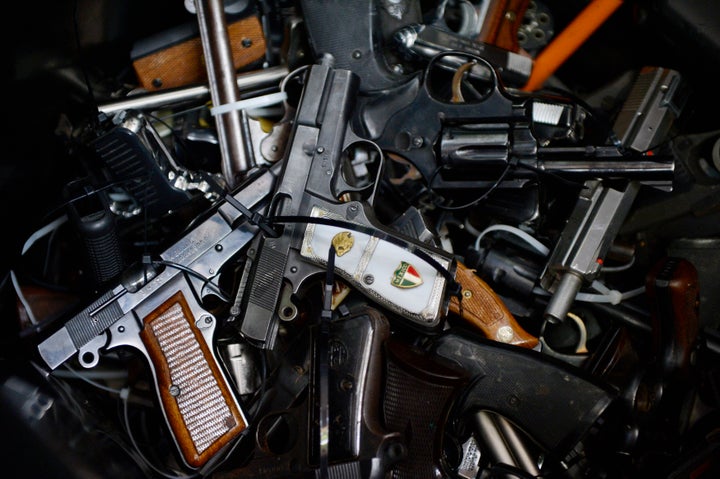
Our friends at The Trace have released a treasure-trove of data which should be used to set a new standard and direction for gun violence research. The data consists of records from more than 1,000 police agencies in 36 states covering information on guns that were either reported stolen or picked up by the cops since 2010. Recent stories in The Trace and other media have noted a surge in gun thefts as a consequence of the desire of Americans to carry a gun for self-defense. But trying to make any specific connections between guns that are reported stolen to guns picked up in crimes is an inexact science, if only because police departments aren’t necessarily required to furnish anyone else with information on stolen guns.
However, guns picked up at crime scenes or taken away from people who shouldn’t have them represent potential evidence in a criminal proceeding and the cops usually do a good job of keeping accurate records about such guns. The data aggregated by The Trace falls largely into that latter category, which is why this information represents such a valuable and unique source.
Most of the gun-violence research by our friends in public health steers clear of the crime issue, but what drives our gun-violence numbers so much higher than any other OECD country is the use of guns to commit crimes. If we were to estimate how many gun suicides would not occur if suicide-minded individuals had to end their lives some other way, we would probably see a drop in overall suicides of 15 percent. When it comes to unintentional shootings, probably half occur during hunting season, and with 14 million hunters taking to the fields and woods three or four times each year, half of the annual gun accidents (roughly 8,000) is no big deal. This leaves us with the 75,000+ gun deaths and injuries which also happen to be crimes.
I believe that in order to understand gun violence you have to start with the gun. How come certain types of guns are used in criminal events whereas other types rarely, if ever appear? Do we know whether the same gun brands, calibers and models turn up to the same degree in every jurisdiction with significant gun crimes, or do the types and brands of guns vary from place to place? You may think these are foolish questions but to the contrary, without such information, all the talk about ‘epidemiology’ is just that ― talk.
One more very important point about the wonderful work done by The Trace team: the data is completely downloadable and therefore constitutes not only an essential but an open source. I have downloaded all of it and over the next several weeks will publish some additional columns based on what I learn. I trust that other gun violence prevention researchers will do the same.
The data for Chicago (where else?) is a good place to start. It covers 47,556 separate entries (from 2012 through 2016) of which 40,956 were guns ‘received’ by Chicago PD in one way or another, and the other 3,972 were reported as stolen guns. Let’s take two random weeks (May 12-26) in 2014 – the cops picked up 315 guns. Of these, 13 were shotguns, they don’t count; another 29 were 22 or 25-caliber handguns, lethal but you have to shoot straight; four were assault rifles, one air rifle and one hunting gun.
This leaves 267 hi-caliber handguns but only 17 Glocks! Walk into any gun shop and if they have 267 handguns in their inventory, I guarantee that 50 or more will be Glocks. Glocks are to handguns like America goes with apple pie. How come Glock isn’t the gun of choice in the Chicago streets?
Figuring out an answer to that question is gun violence research which needs to be done. And the data published by The Trace gives us an objective starting point which is where research should always begin. So now let the research begin.
